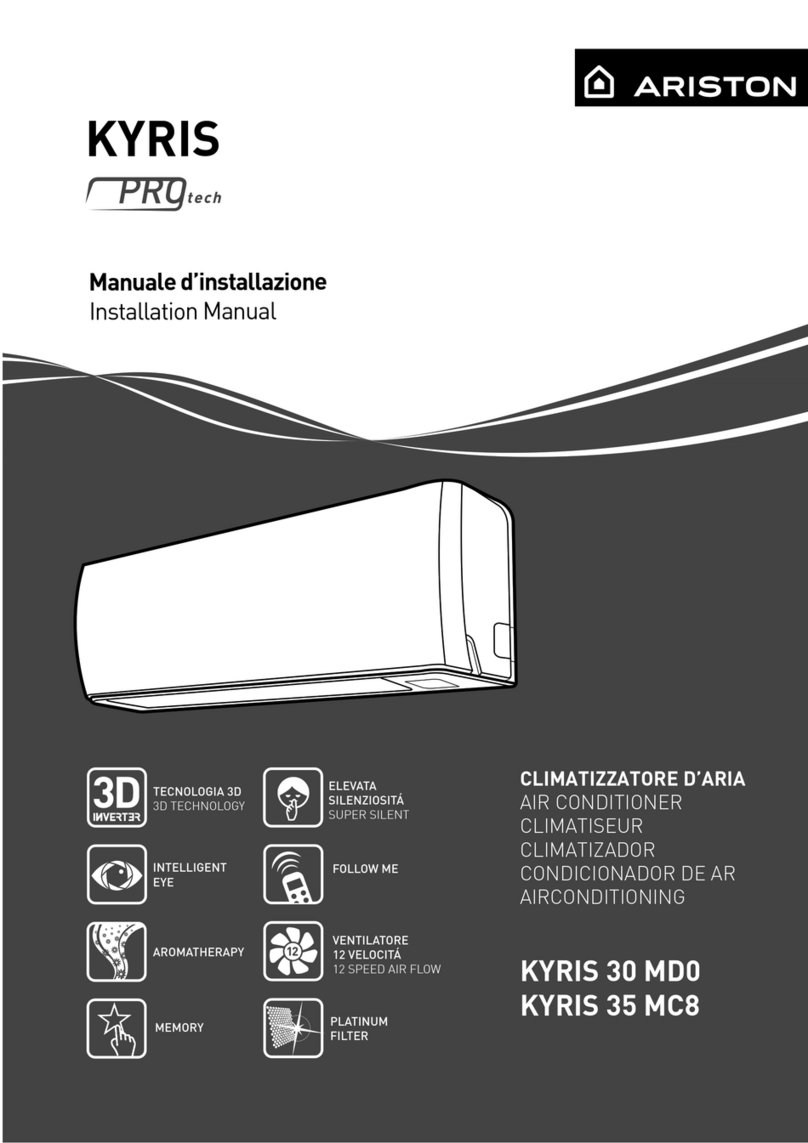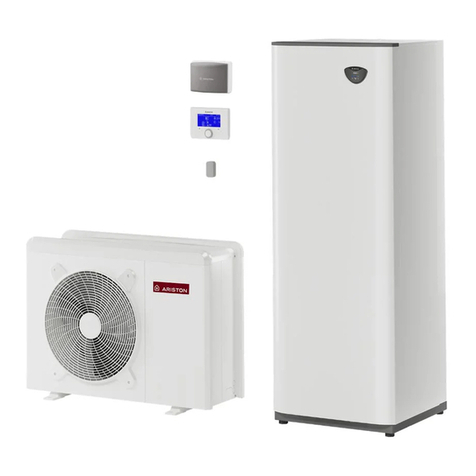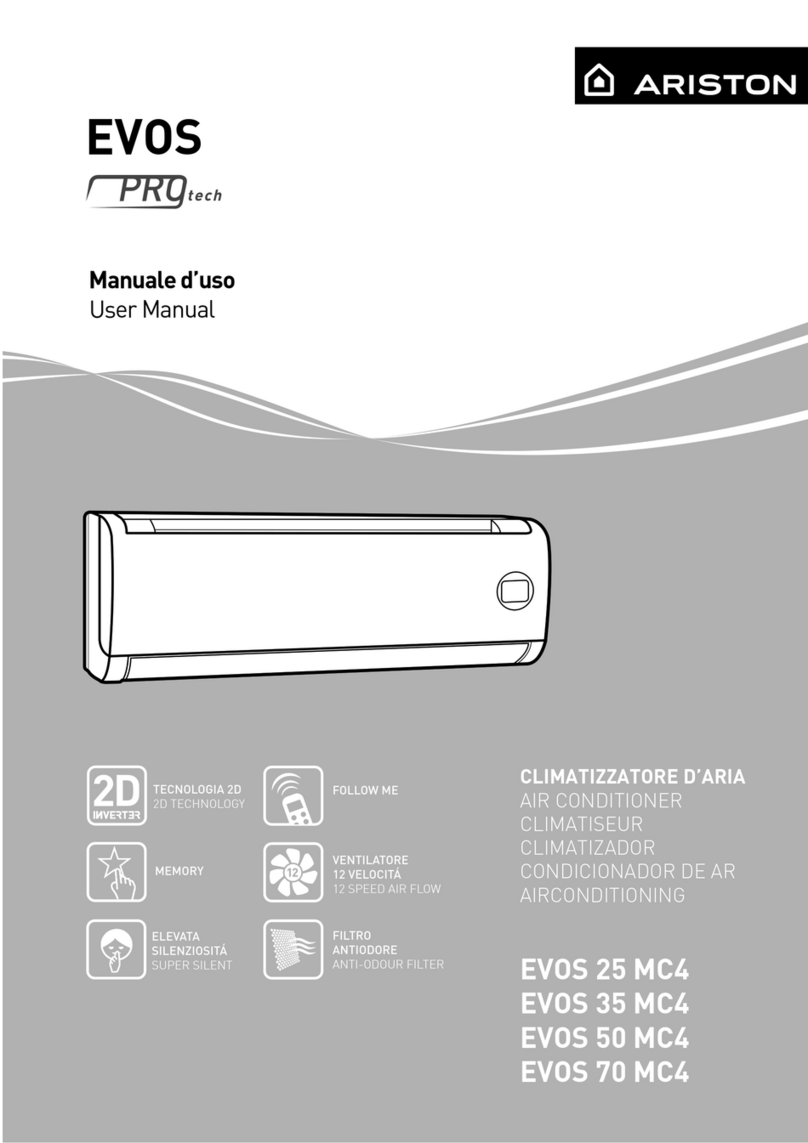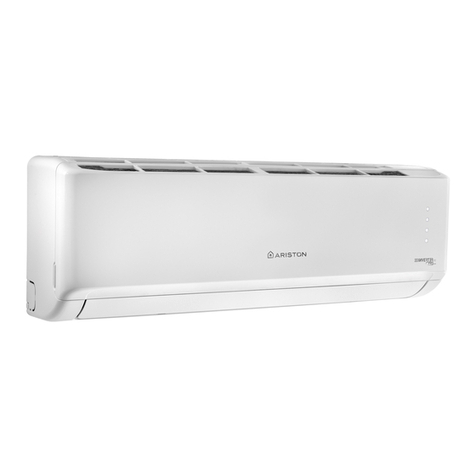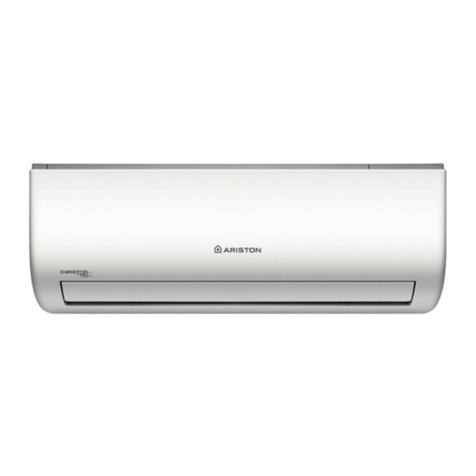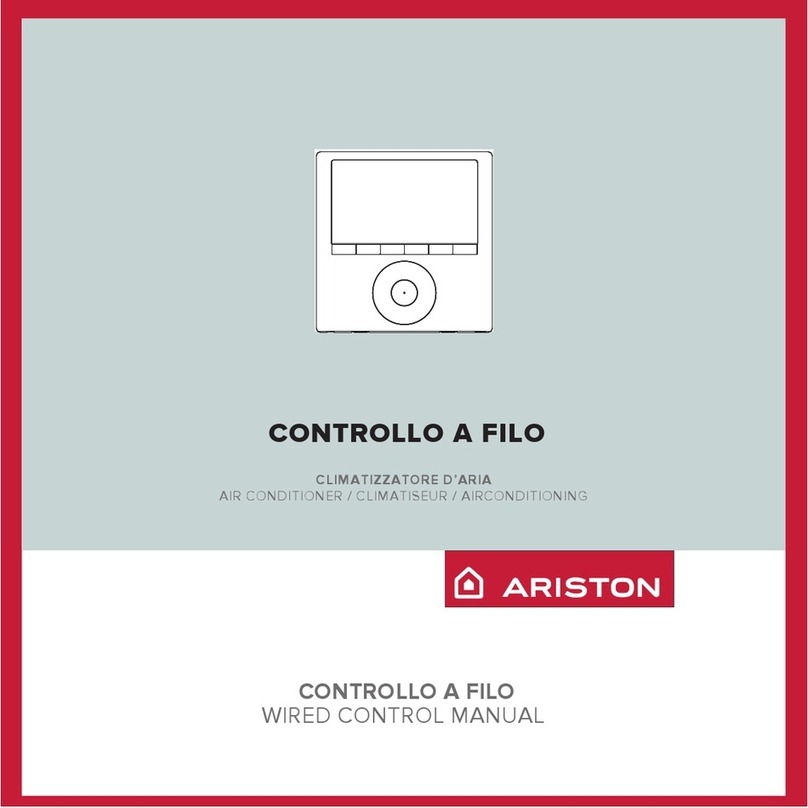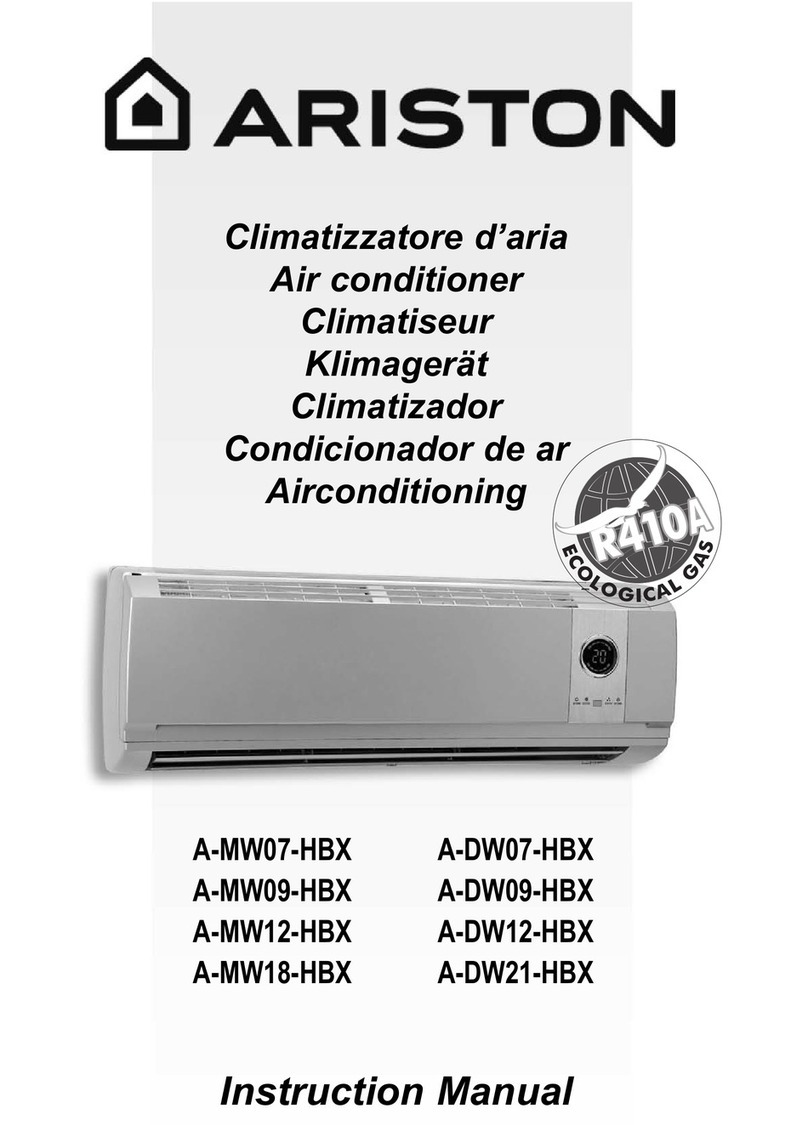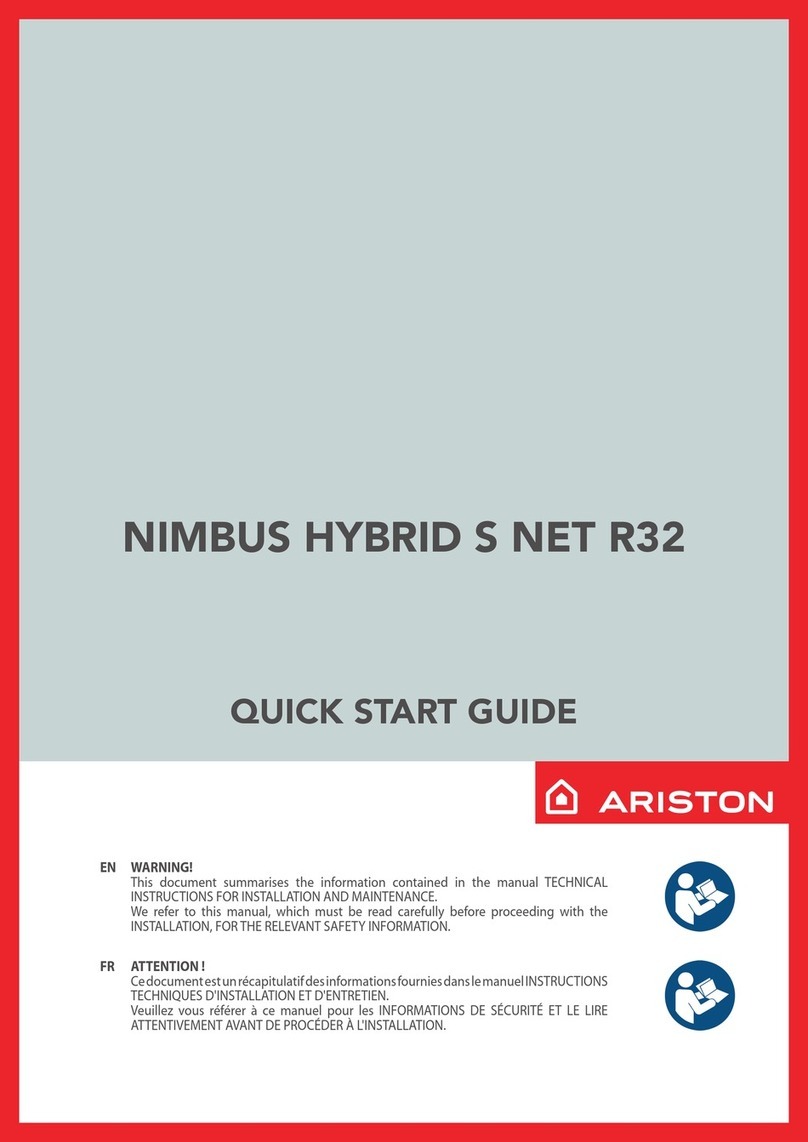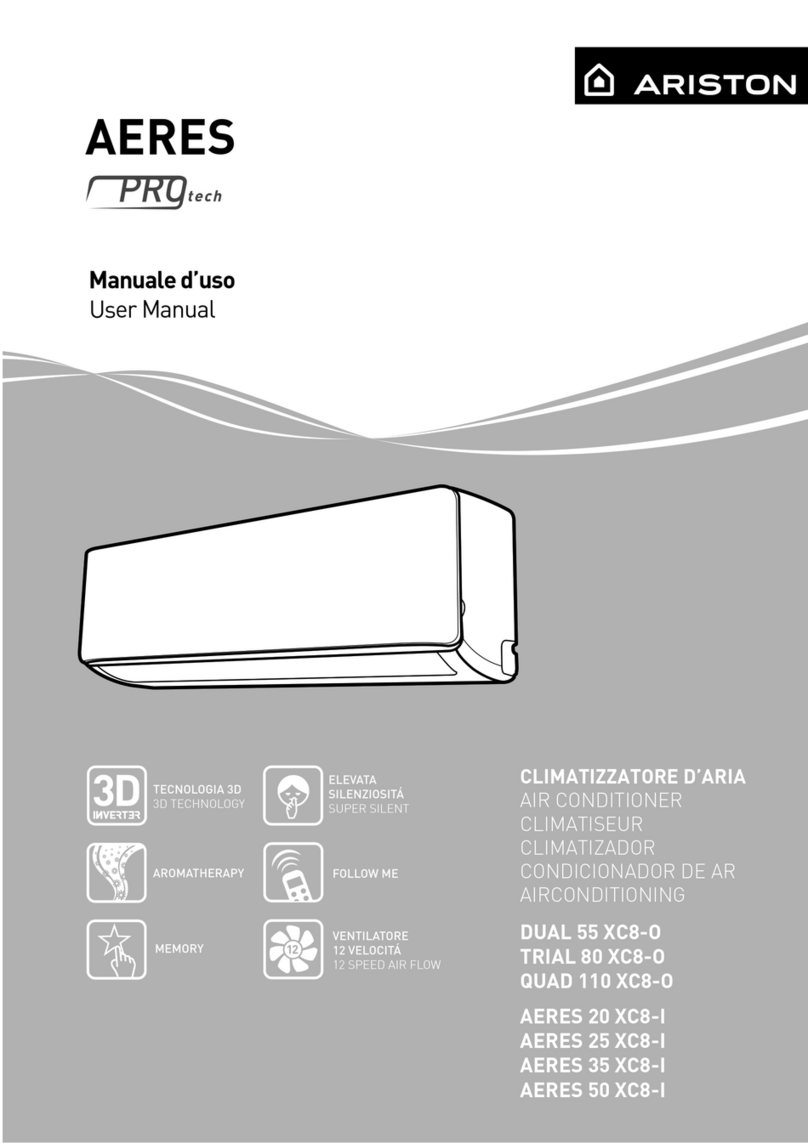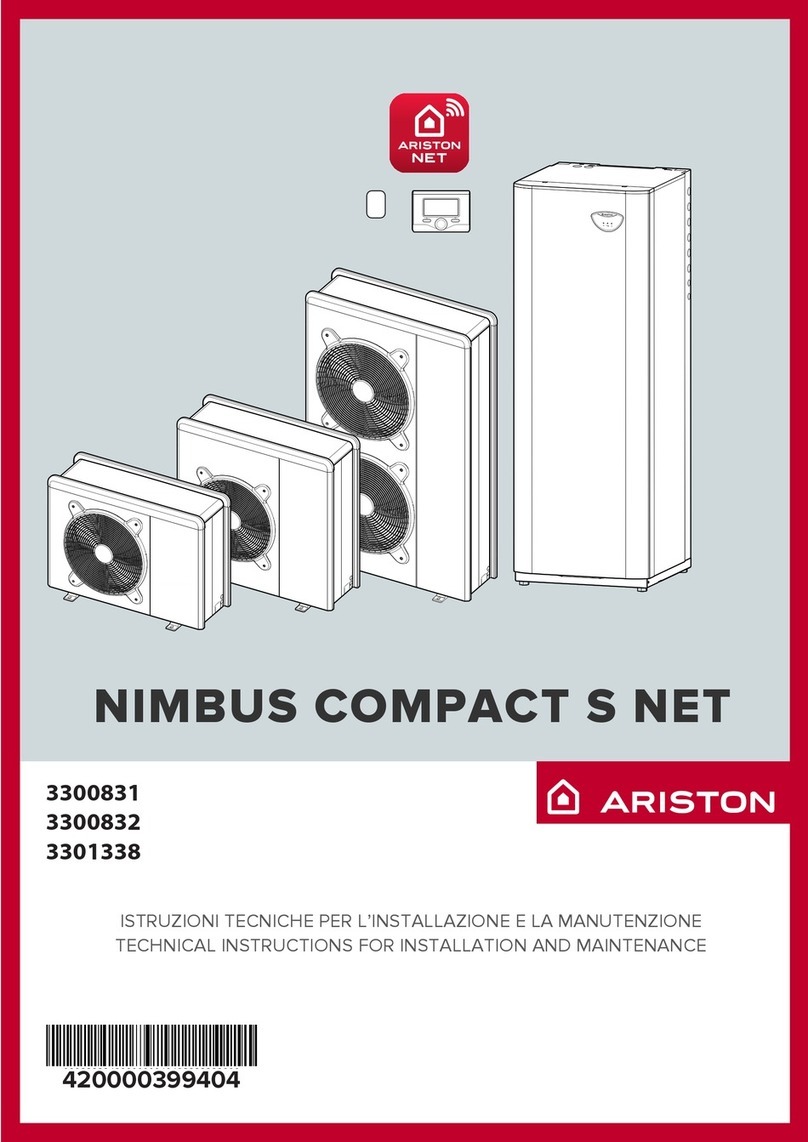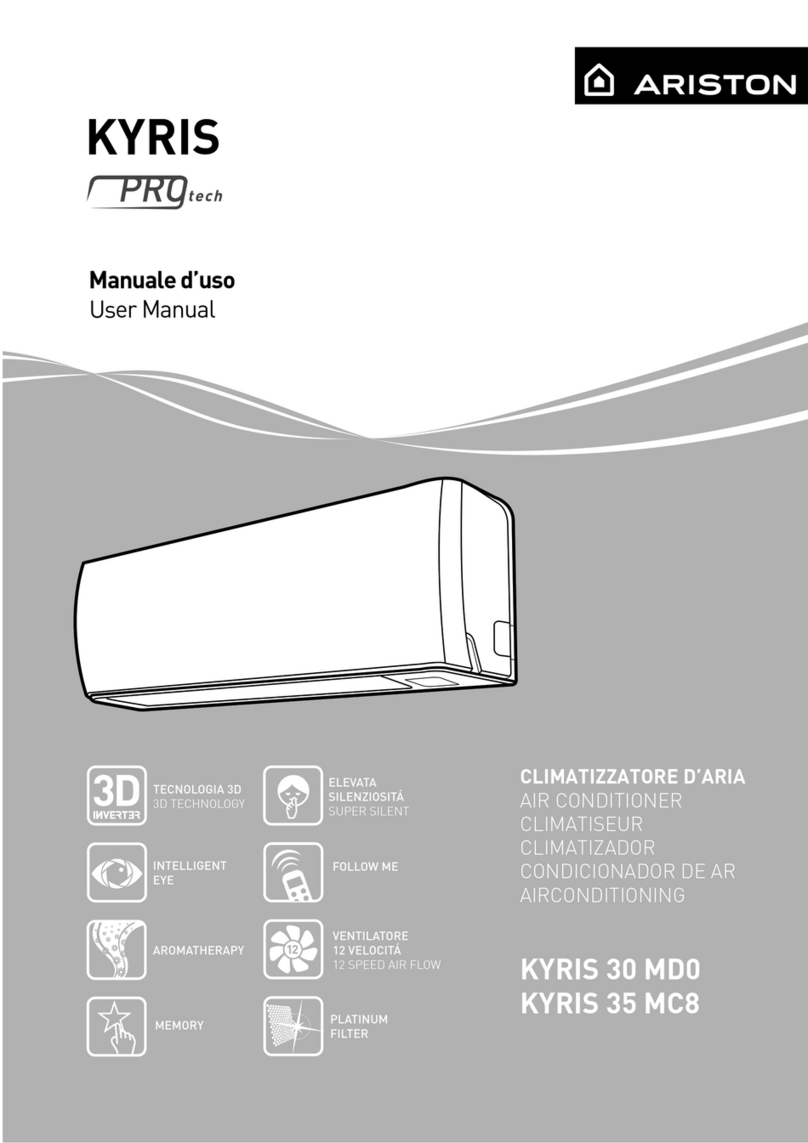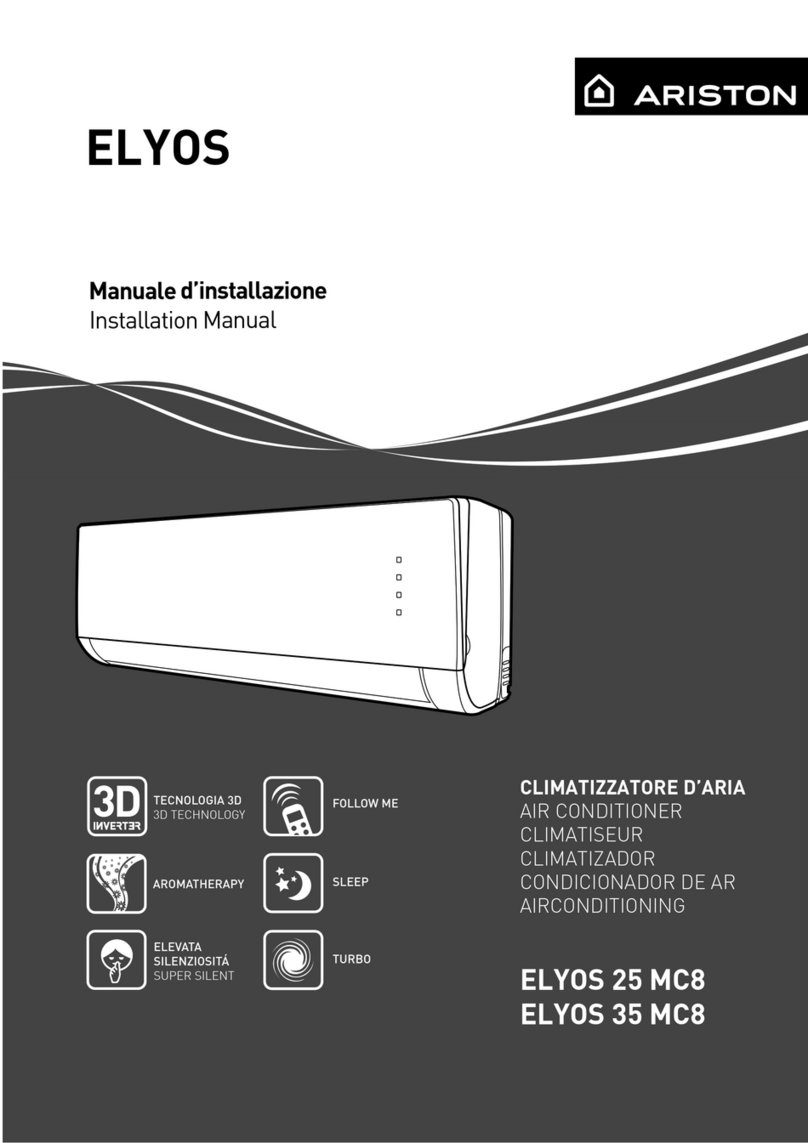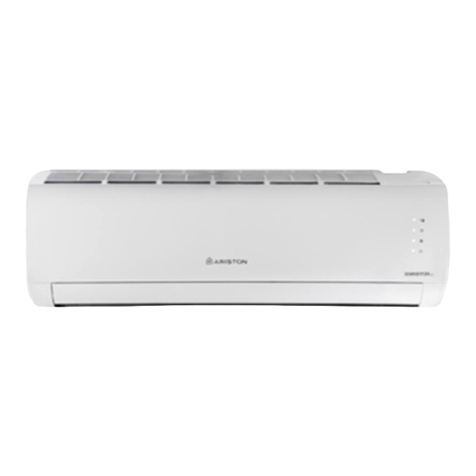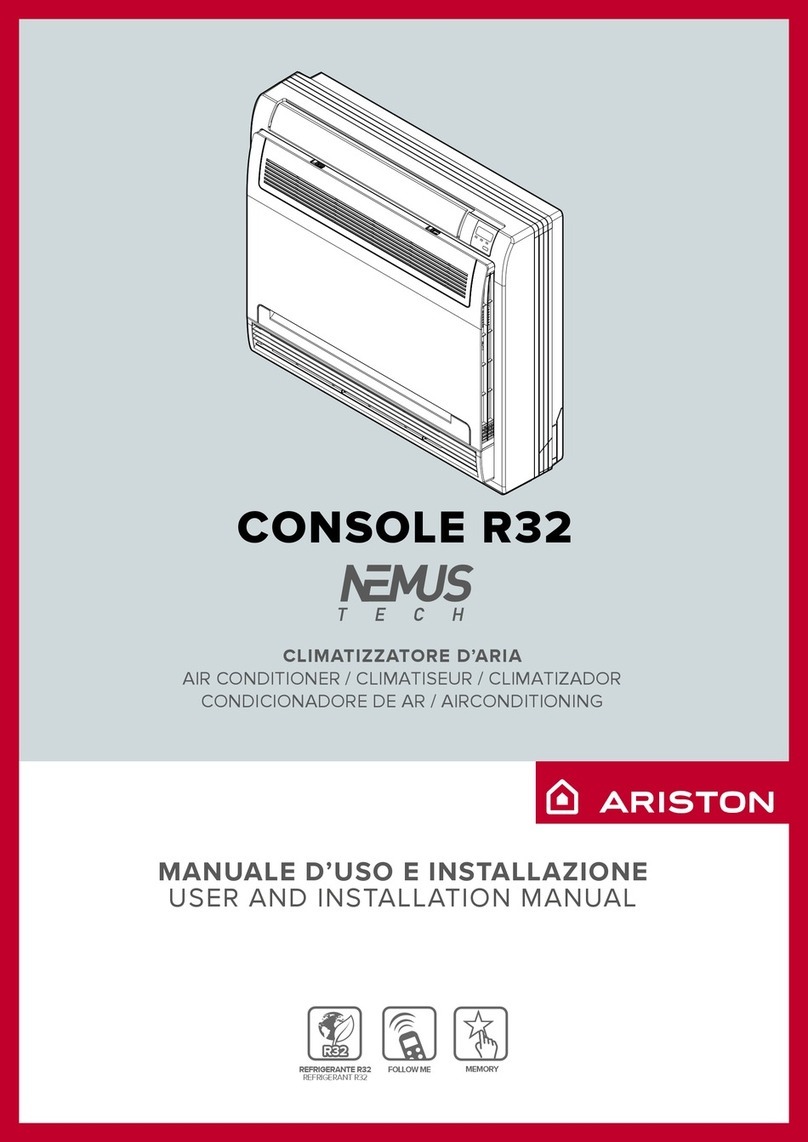
Safety advices
4 / EN
1. Safety advices
1.1 General warnings and safety instructions
i
This manual is the property of ARISTON and it
is forbidden to reproduce or transfer to third
parties the contents of this document. All
rights reserved. This document is an integral
part of the product; make sure that it always
accompanies the appliance, also when the
latter is sold/transferred to another owner, so
that it can be consulted by the user or by per-
sonnel authorised to perform maintenance
and repairs.
i
Read the information and warnings given in
this manual in full; they are essential to the
safe installation, use and maintenance of the
product.
i
Do not use the product for any purpose other
than that specified in this manual. The man-
ufacturer is not liable for damage resulting
from improper use of the product or failure
to install it as instructed herein.
i
All routine and extraordinary maintenance
operations must be carried out exclusively by
qualified personnel exclusively using original
spare parts. The manufacturer is not liable for
damage resulting from failure to observe this
instruction, which may compromise the safe-
ty of the installation.
i
Product dismantling and recycling opera-
tions must be carried out by qualified tech-
nical personnel.
a
When connecting the cooling system, avoid
substances or gases other than the speci-
fied refrigerant from entering the unit. The
presence of other gases or substances in the
unit can reduce its performances and relia-
bility, and also cause an abnormal pressure
increase during the cooling cycle. This could
lead to possible explosions and the resulting
injuries.
a
The appliance must be installed in a well-ven-
tilated room having adequate dimensions as
specified for the appliance’s operation.
a
The Heat pump can be used by children old-
er than 8 years and by people with reduced
physical, sensory or mental abilities, or who
lack adequate experience and the necessary
knowledge, provided they are supervised or
have been instructed on the safe use of the
appliance and on the potential risks connect-
ed with it. Children must not play with the
appliance. Any cleaning and maintenance
which should be performed by the user must
not be done by unsupervised children.
a
For electrical interventions, observe the pro-
visions of the national electrical standard,
local rules, applicable regulations, and the
instructions of the installation manual. It is
necessary to use an independent circuit and
a single power outlet. Do not connect oth-
er appliances to the same power outlet. An
insufficient electrical capacity or defective
electrical installation may lead to potential
electrocution or fire.
a
During the appliance installation phases, be
careful not to damage the power cables or
any existing piping.
a
Perform all electrical connections using suit-
ably-sized cables.
a
Protect connection piping and cables so as
to prevent damage to them.
i
Make sure the installation site and any sys-
tems to which the appliance must be con-
nected comply with applicable regulations.
